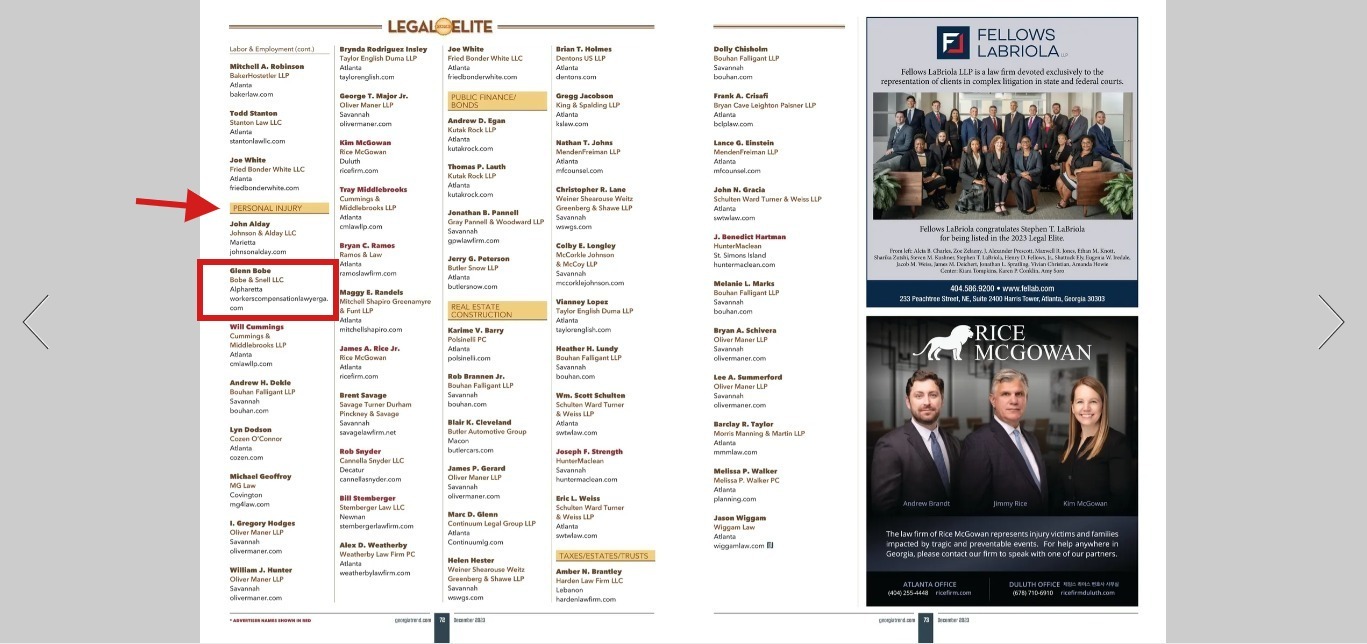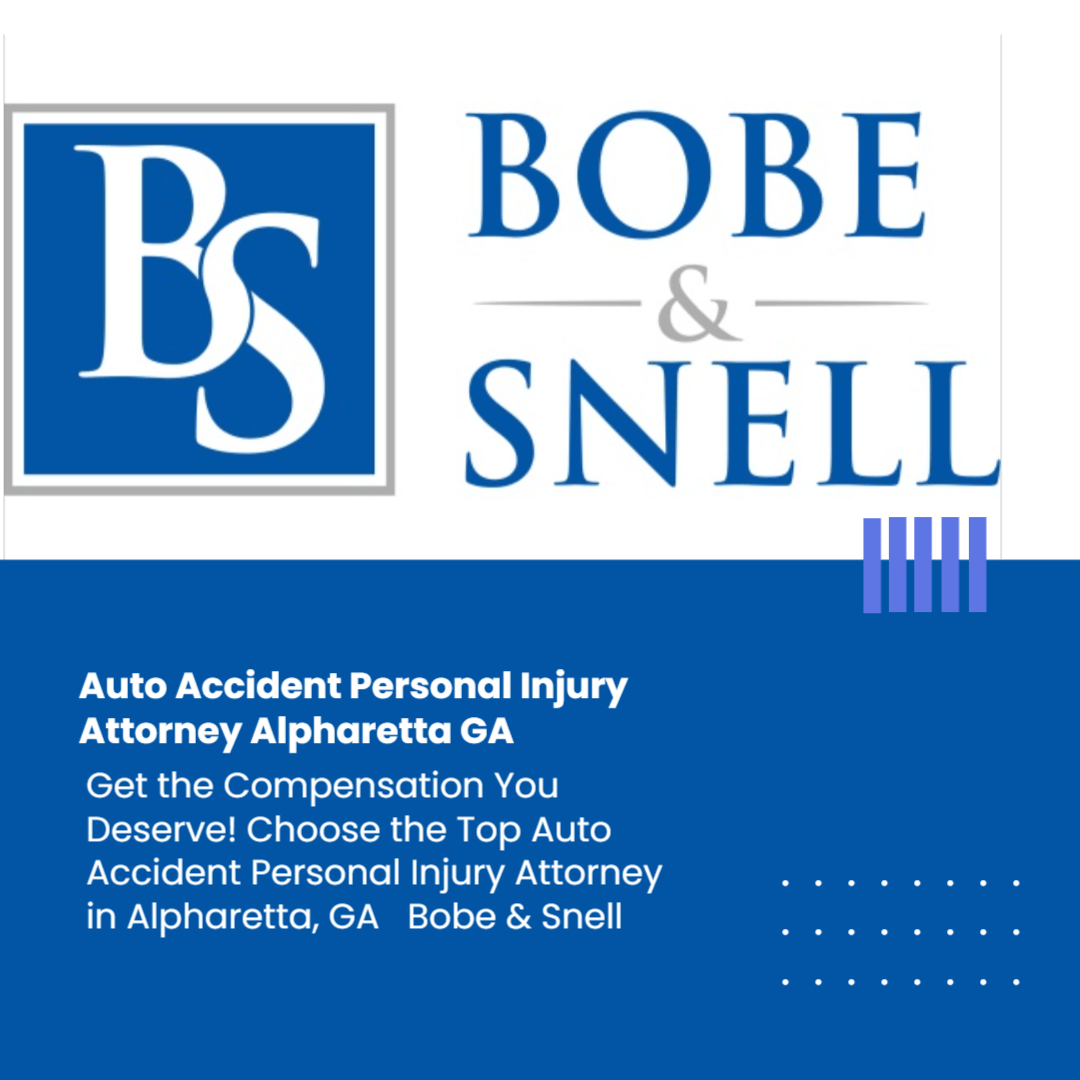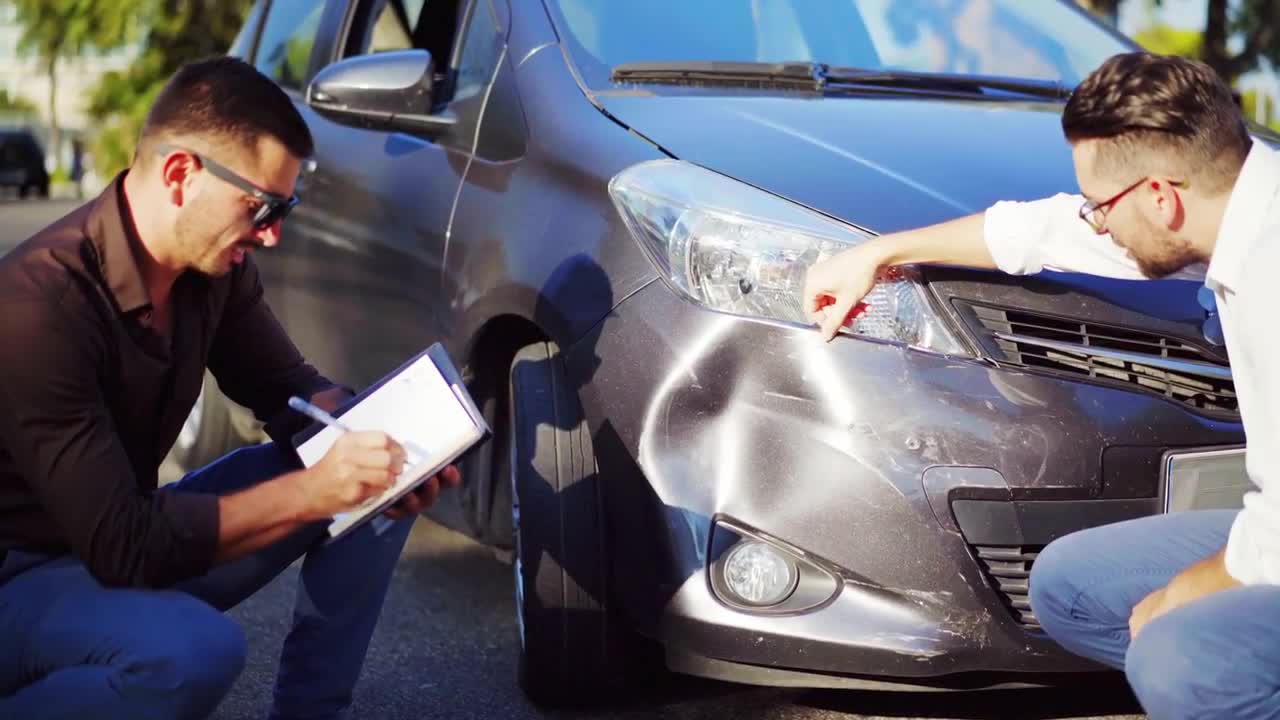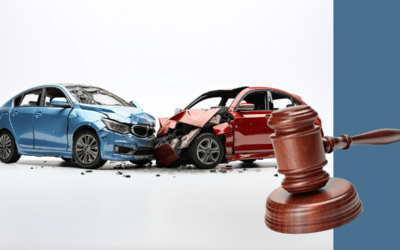Glenn Bobe, a Georgia Legal Elite, has been recognized for his exceptional talent and expertise as a personal injury lawyer. At Bobe and Snell Law Firm, we are proud to have Glenn Bobe on our team and honored to be included in the esteemed GeorgiaTrend Legal Elite 2023. When it comes to personal injury cases, our experienced attorneys stand out.

Bobe & Snell Earn Legal Elite 2023 Award
Bobe & Snell Earn Legal Elite 2023 Award
click to enlarge image or open pdf.
Glenn Bobe, a Georgia Legal Elite, has been recognized for his exceptional talent and expertise as a personal injury lawyer.
At Bobe and Snell Law Firm, we are proud to have Glenn on our team and honored to be included in the esteemed GeorgiaTrend Legal Elite 2023. When it comes to personal injury cases, our experienced attorneys stand out.
We understand the challenges you may face during this difficult time and are dedicated to guiding you through the legal process with compassion and determination. With the GeorgiaTrend Legal Elite 2023 by our side, we bring an added layer of insight and expertise to every case.
From investigating the accident to negotiating with insurance companies, we leave no stone unturned in our pursuit of justice. Your rights matter to us, and we are committed to protecting them. Contact us today to take the first step towards seeking the justice and compensation you deserve. Together, we will secure a brighter future.
GeorgiaTrend Legal Elite 2023: The Leading Legal Minds of Our Time
In the world of law, expertise and recognition go hand in hand. That’s why we are thrilled to announce the GeorgiaTrend Legal Elite 2023, a prestigious annual list that celebrates the most accomplished legal professionals in our state.
At Bobe and Snell Law Firm, we take great pride in being home to some of Georgia’s finest attorneys, and we are honored to have our team members included in this esteemed group. Each attorney recognized as part of the GeorgiaTrend Legal Elite 2023 has demonstrated exceptional skill, dedication, and a commitment to justice that sets them apart.
When it comes to personal injury cases, such as automobile accidents, our expertise shines through. We understand the challenges and complexities that you may face during this difficult time, and we are here to help. Our team of experienced personal injury attorneys is dedicated to guiding you through the legal process with compassion, determination, and an unmatched level of service.
With the GeorgiaTrend Legal Elite 2023 by our side,
We bring an added layer of insight and expertise to every case we handle. We tap into a network of exceptional legal minds, fostering collaboration and ensuring that our clients receive the best possible representation.
From investigating the accident to gathering crucial evidence, we leave no stone unturned in our pursuit of justice. Our attorneys skillfully negotiate with insurance companies on your behalf, fighting for the compensation you deserve. Throughout it all, we prioritize communication, keeping you informed every step of the way and offering expert guidance to navigate the complexities of the legal process.
Your rights matter to us
And we are unwavering in our commitment to protecting them. With the GeorgiaTrend Legal Elite 2023 on our side, we are equipped with invaluable knowledge and foresight that enhances our ability to achieve favorable outcomes for our clients.
Don’t let the weight of an automobile accident burden you any longer. Take the first step towards seeking the justice and compensation you deserve by contacting us today. Our seasoned team, complemented by the GeorgiaTrend Legal Elite 2023, is here to provide you with comprehensive legal support and unmatched dedication. Together, we will navigate the intricate legal landscape and secure a brighter future.
Additional Articles
Bobe & Snell Earn Legal Elite 2023 Award
Alpharetta Personal Injury Lawyer
That’s where an experienced Alpharetta personal injury lawyer from Bobe and Snell LLC can step in to help.
A Personal Injury Litigator
A personal injury litigator is a lawyer who specializes in representing clients who have suffered physical or psychological injuries due to the...
How A Personal Injury Litigator Helps GA Victims
[pac_divi_table_of_contents default_state="closed" included_headings="on|on|on|on|on|off"...
First Things First After a Personal Injury
Immediately after suffering a personal injury caused by someone else, it is crucial to take swift action to protect your rights and receive the compensation.
Maximizing Your Compensation: Auto Accident Experts
Looking for a reliable attorney after an auto accident? Bobe & Snell over 35 years serving the Georgia Community. Your Personal Injury attorney
Alpharetta Motorcycle Accident Lawyer
Our team of experienced Alpharetta Motorcycle Accident Lawyers is committed to being your advocate, fighting for your rights, and ensuring that you receive the compensation you deserve.
Car Accident Injury Attorney
When you’ve been injured in a car accident, it’s crucial to have the support and guidance of a skilled car accident injury attorney.
Bobe & Snell Earn Legal Elite 2023 Award
Glenn Bobe, a Georgia Legal Elite, has been recognized for his exceptional talent and expertise as a personal injury lawyer. At Bobe and Snell Law Firm, we are proud to have Glenn Bobe on our team and honored to be included in the esteemed GeorgiaTrend Legal Elite 2023. When it comes to personal injury cases, our experienced attorneys stand out.

















